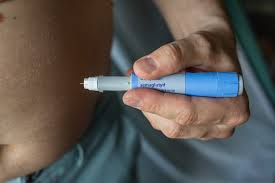If you’re experiencing discomfort at the back of your mouth, you might wonder, how to know if your wisdom teeth are infected. Wisdom Tooth Extraction, also known as third molars, often erupt improperly or become impacted, making them vulnerable to infection. A wisdom tooth infection, known as pericoronitis, typically occurs when bacteria become trapped under the gum flap covering a partially erupted tooth. Early detection is key to preventing further oral health complications, so understanding the warning signs is essential.
Common Symptoms of Infected Wisdom Teeth:
An infection in your wisdom teeth may not always be immediately obvious. However, there are several signs to watch for that could indicate a problem is developing. Key symptoms include:
-
Swollen, red, or bleeding gums around the back molars
-
Persistent bad breath or a foul taste in the mouth
-
Throbbing or sharp pain in the jaw or around the tooth
-
Difficulty chewing or opening your mouth fully
-
Pus or discharge near the affected tooth
-
Swollen lymph nodes in the neck or jaw area
These symptoms often start mildly but can intensify quickly. Pain that spreads to the ear or neck should not be ignored.
Causes of Wisdom Tooth Infections:
Wisdom teeth are more prone to infections due to their location and the way they erupt. Some common causes include:
-
Partial eruption, which creates a pocket where bacteria and food debris collect
-
Impacted teeth, which remain trapped in the gum or bone
-
Lack of proper cleaning, making the area a breeding ground for germs
-
Gum tissue trauma from opposing teeth or hard foods
-
Tooth decay in nearby molars that spreads to the wisdom tooth area
Because these teeth are hard to reach, they often go unnoticed until pain or infection sets in.
When to See a Dentist?
If you’re showing any signs of infection or you’re unsure about your symptoms, it’s crucial to see a dentist promptly. Reasons to schedule a visit include:
-
Pain that lasts more than two days
-
Swelling that doesn’t subside or increases
-
Fever or general feeling of illness, which may indicate the infection is spreading
-
Pus drainage, a clear sign of infection
-
Difficulty swallowing or breathing, which could be an emergency
A dental professional will likely take X-rays and examine the area to determine the severity of the infection and the best course of action.
Treatment Options for Infected Wisdom Teeth:
Treating a wisdom tooth infection depends on the extent of the condition. Options may include:
-
Antibiotics, to fight the bacterial infection and reduce swelling
-
Salt water rinses, to help keep the area clean
-
Pain relievers, such as ibuprofen, to manage discomfort
-
Dental cleaning around the infected site
-
Wisdom tooth extraction, if the infection is recurrent or the tooth is impacted
-
Surgical drainage, in severe cases where abscesses form
Early treatment usually prevents complications, but delayed care could lead to jaw bone infection or systemic health risks.
Preventing Future Wisdom Tooth Infections:
Prevention is always better than cure when it comes to oral health. To reduce your risk of developing an infected Wisdom Tooth Extraction Treatment, consider the following:
-
Maintain excellent oral hygiene, especially around the back molars
-
Rinse with salt water or antiseptic mouthwash after meals
-
Schedule regular dental checkups and cleanings
-
Monitor your wisdom teeth with periodic X-rays
-
Discuss extraction options with your dentist if teeth are impacted or causing crowding
Understanding how to know if your wisdom teeth are infected empowers you to act quickly, minimizing pain and protecting your overall dental health. If you suspect an issue, don’t delay—timely dental intervention can make all the difference in your recovery and long-term oral care.



